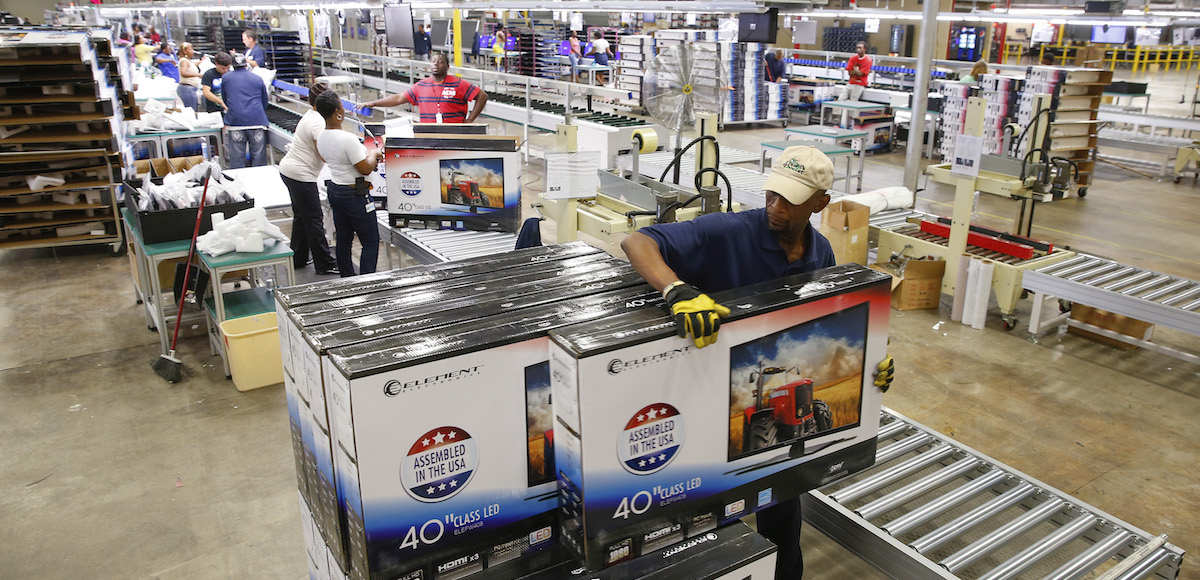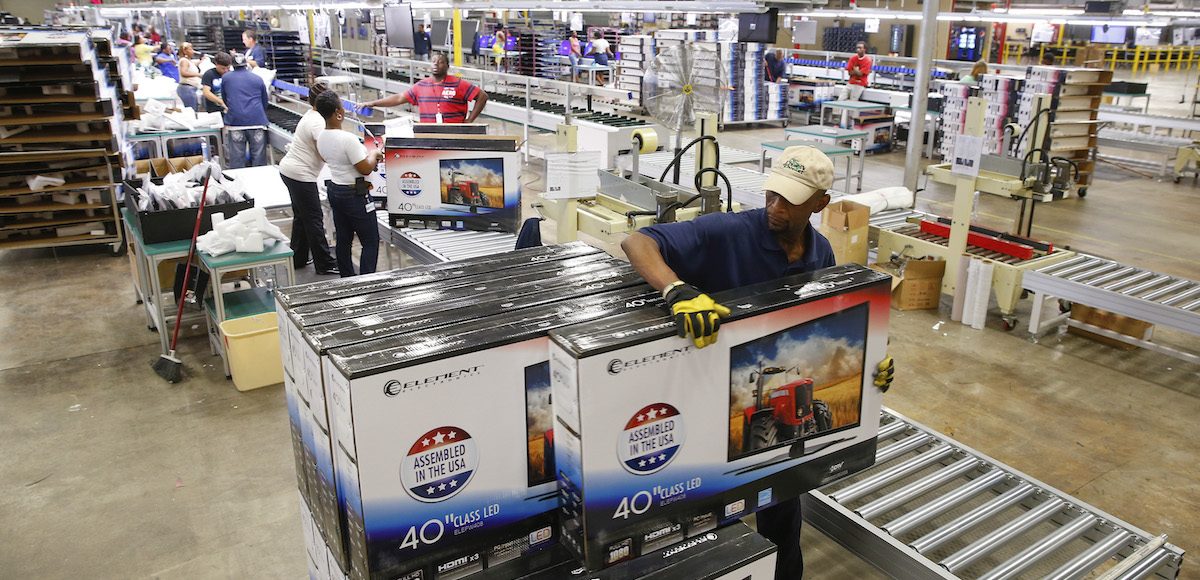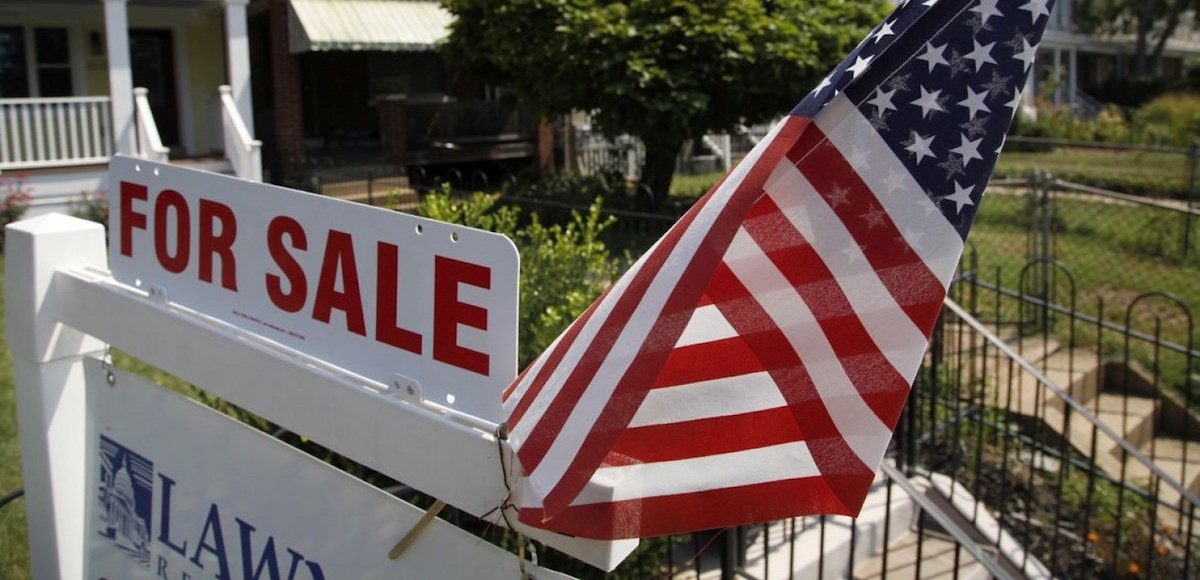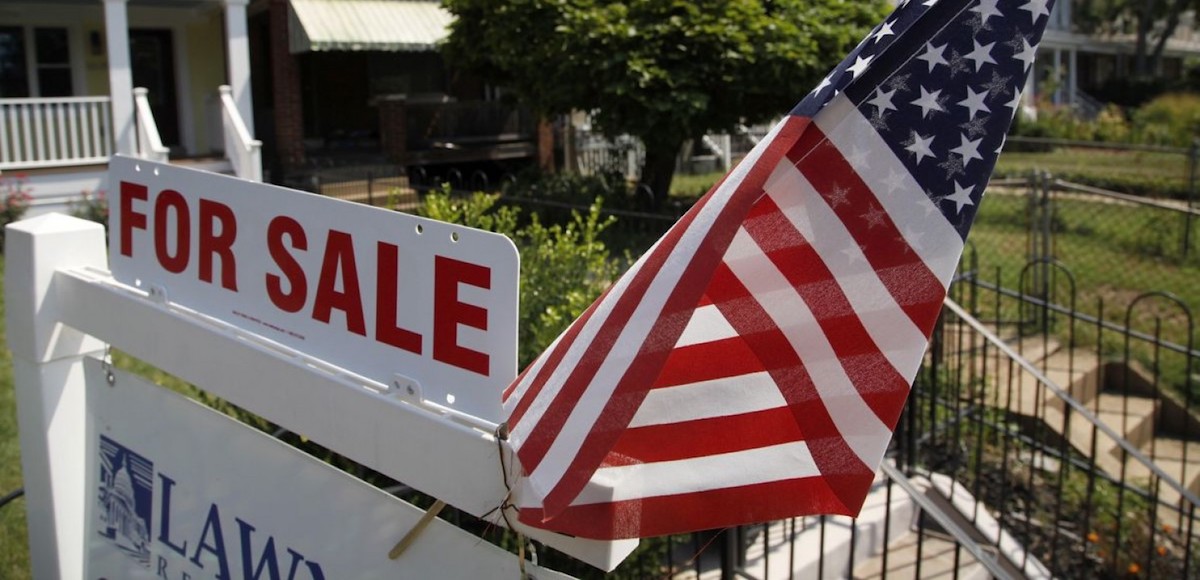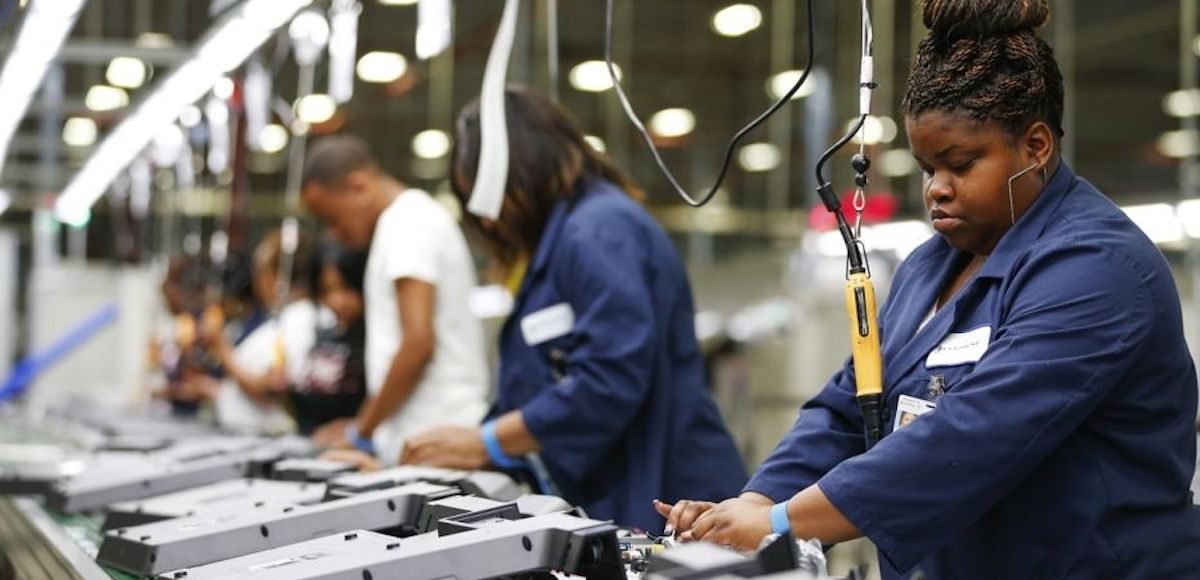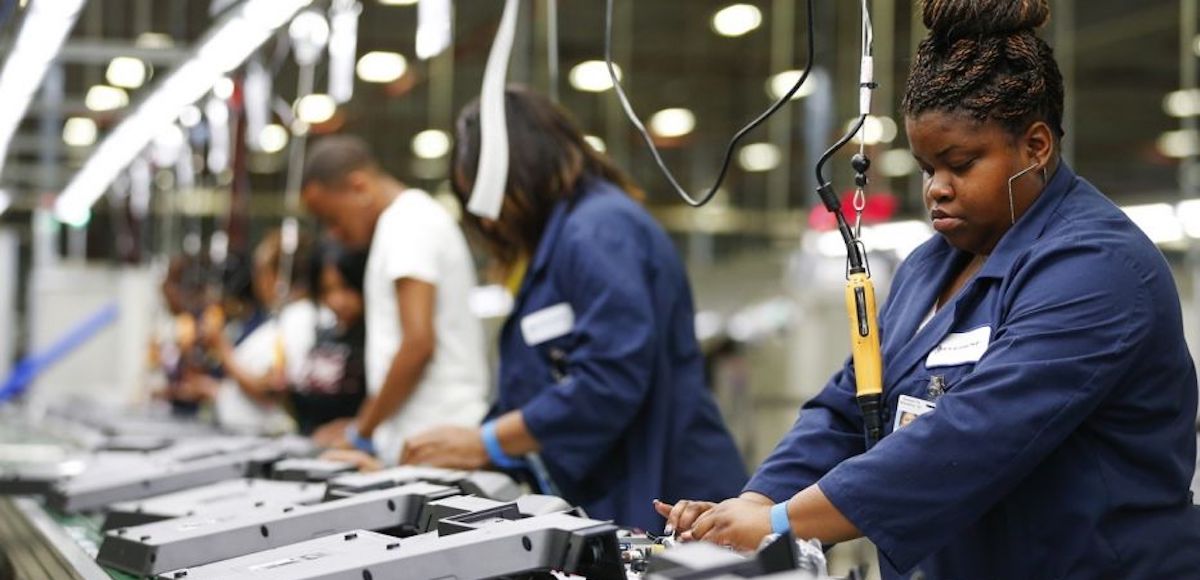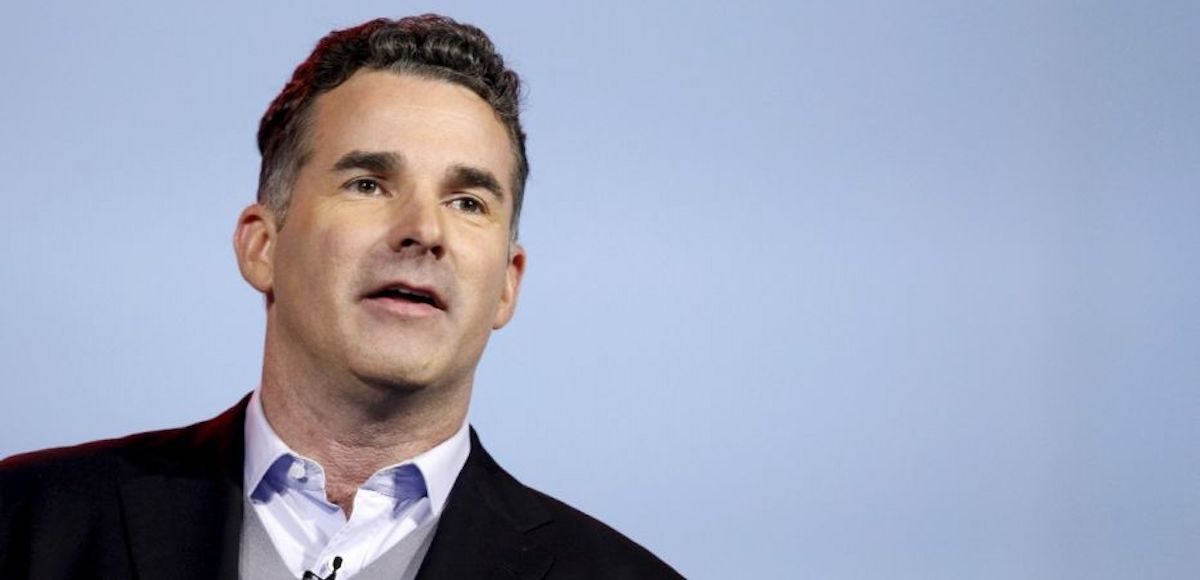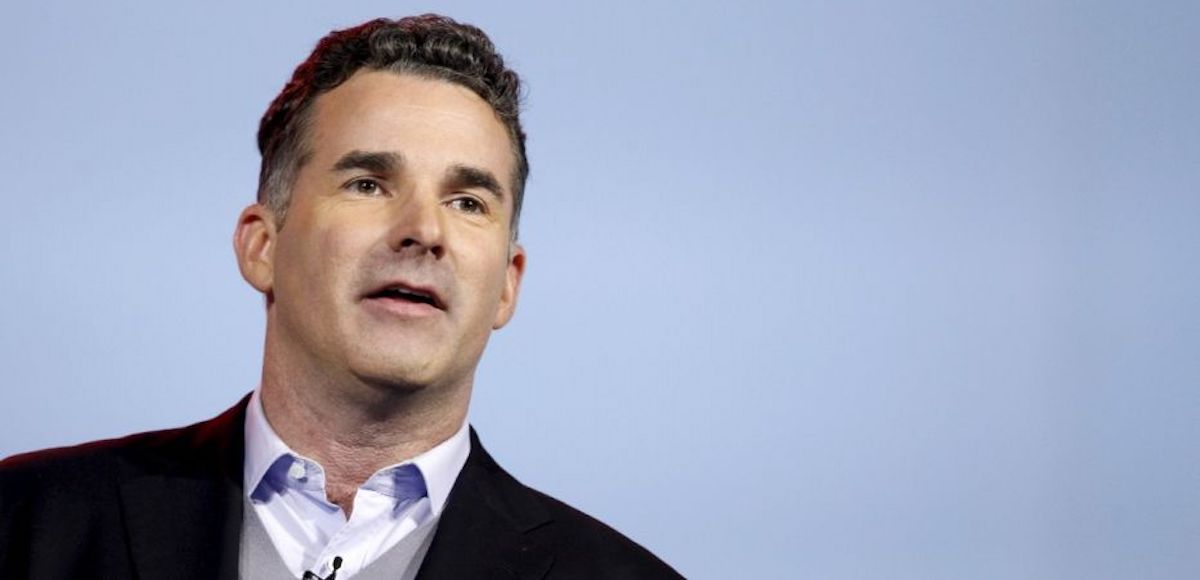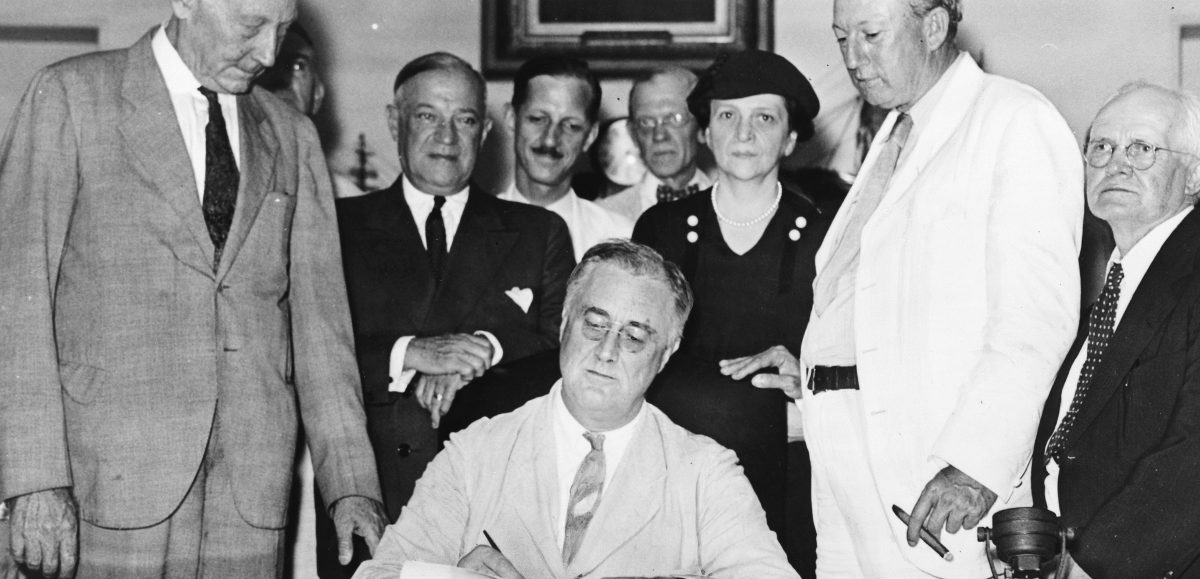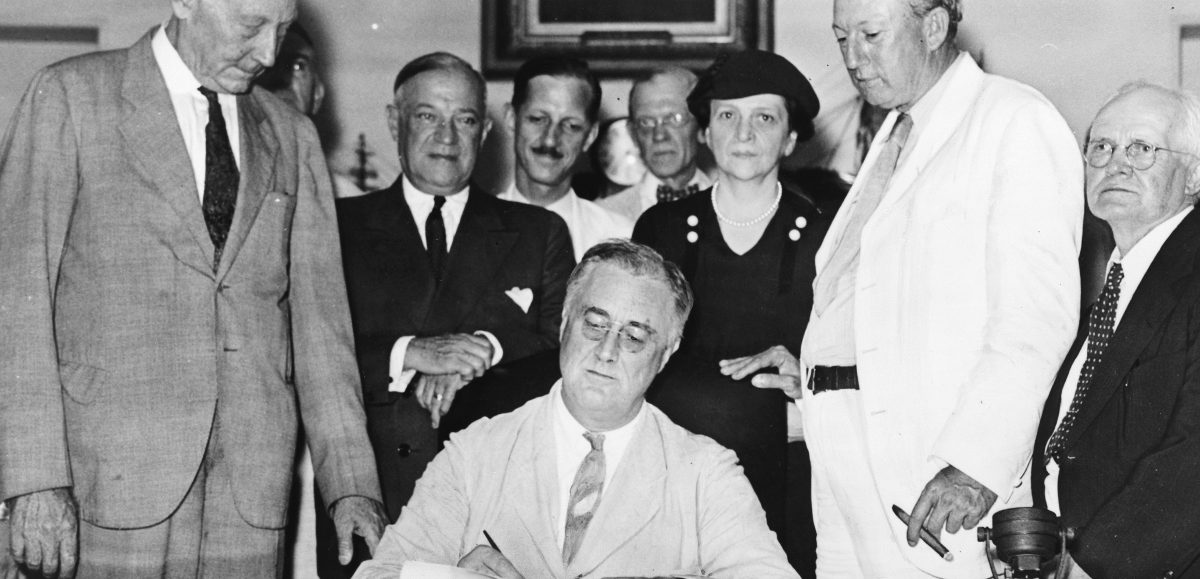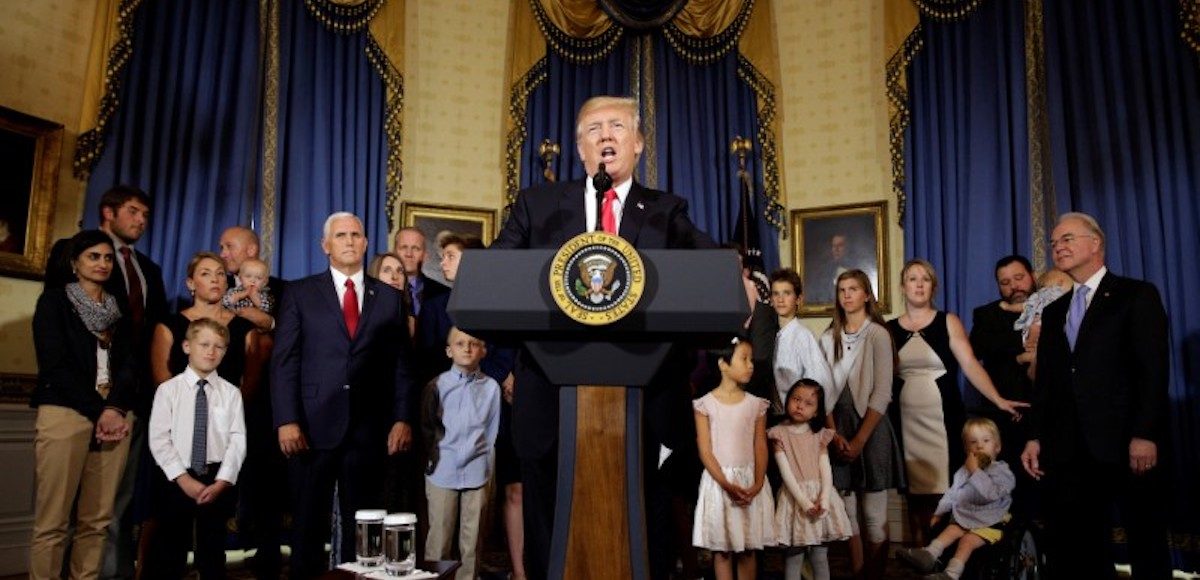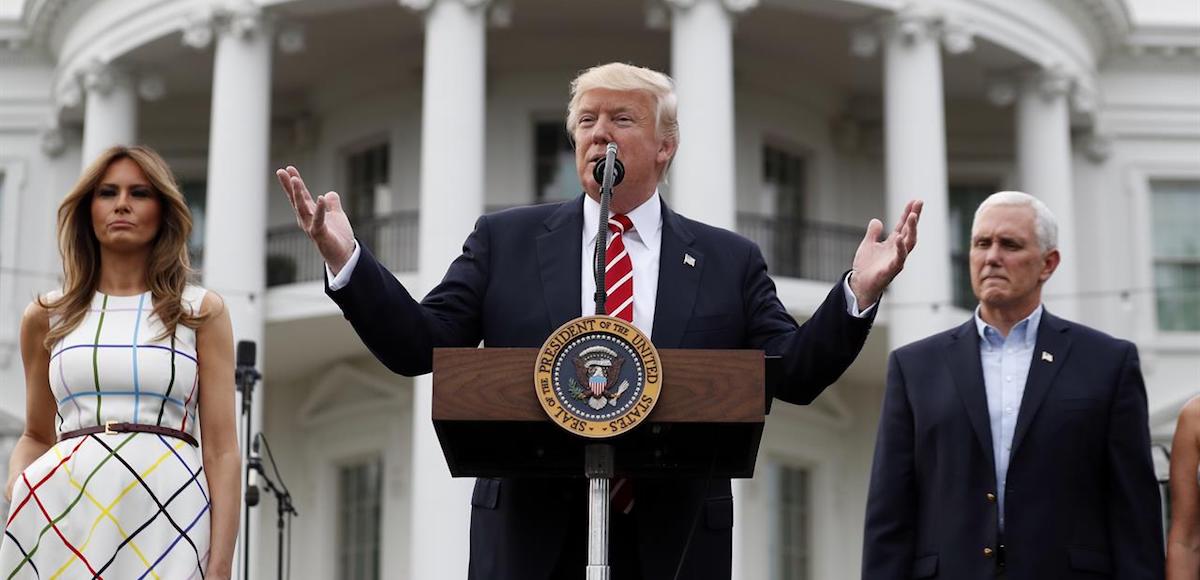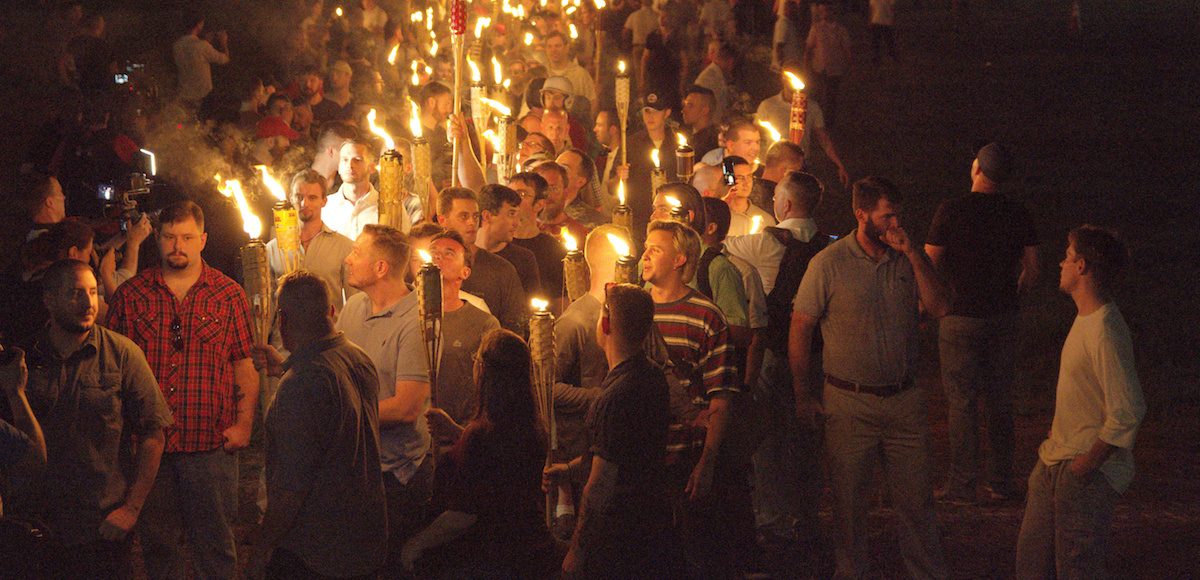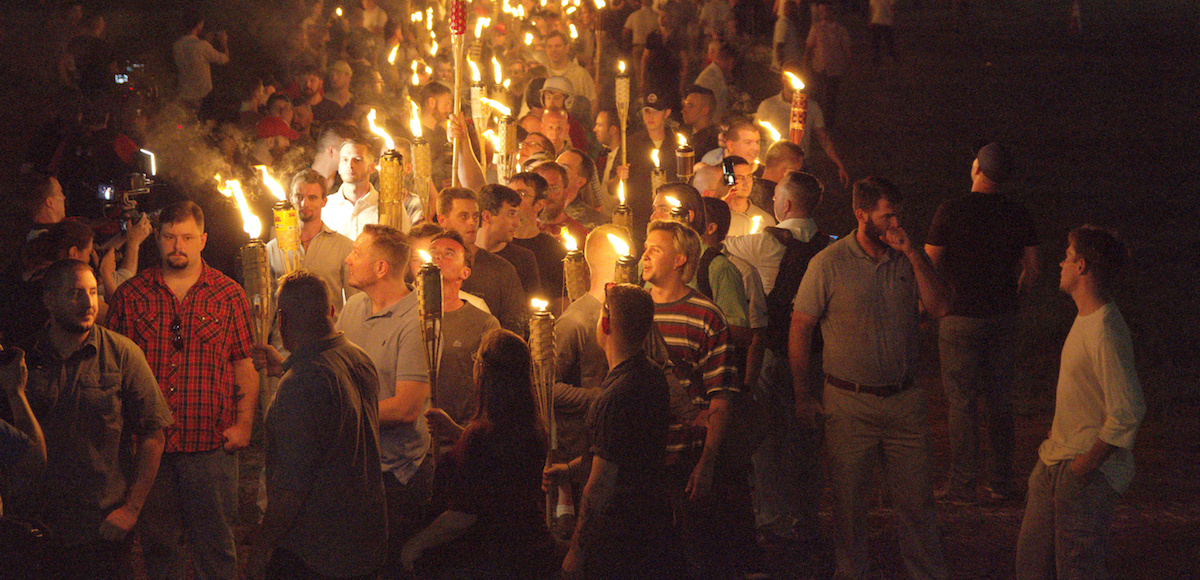
White nationalists carry torches on the grounds of the University of Virginia, on the eve of a planned Unite The Right rally in Charlottesville, Virginia. (Photo: Reuters)
The racist march in Charlottesville, VA, was awful news. The vehicular murder of a woman by one of the racists is even worse news.
 The good news is that almost everyone in the nation is united in condemning the marchers.
The good news is that almost everyone in the nation is united in condemning the marchers.
I especially like what Senator Ben Sasse said about how America isn’t an ethnic identity, but rather a nation of ideals.
It’s also good news is that the free market punishes racism. That’s because people who make decisions based on irrational hatred are less efficient and productive and therefore lose market share.
Indeed, here’s the abstract of an encouraging study on that topic.
Economic theory has long maintained that employers pay a price for engaging in racial discrimination. According to Gary Becker’s seminal work on this topic and the rich literature that followed, racial preferences unrelated to productivity are costly and, in a competitive market, should drive discriminatory employers out of business. …This research pairs an experimental audit study of racial discrimination in employment with an employer database capturing information on establishment survival, examining the relationship between observed discrimination and firm longevity. Results suggest that employers who engage in hiring discrimination are less likely to remain in business six years later.
Indeed, another academic study showed that racist managers result in a less-productive workforce.
Examining the performance of cashiers in a French grocery store chain, we find that manager bias negatively affects minority job performance. In the stores studied, cashiers work with different managers on different days and their schedules are determined quasi-randomly. When minority cashiers, but not majority cashiers, are scheduled to work with managers who are biased (as determined by an Implicit Association Test), they are absent more often, spend less time at work, scan items more slowly, and take more time between customers. Manager bias has consequences for the average performance of minority workers: while on average minority and majority workers perform equivalently, on days where managers are unbiased, minorities perform significantly better than do majority workers. This appears to be because biased managers interact less with minorities, leading minorities to exert less effort.
Writing for Capitalism, Richard Ebeling explains how markets punish racism.
…one of the most important aspects of the free market is precisely that it tempers irrational action. The market ultimately rewards producers by one test and only one test: can a producer deliver the desired goods and services more cheaply and with better quality than another producer who is competing for the same consumer business? Any employer who fails to judge the usefulness of the resources he can buy or hire — including labor — according to the standards of cost and quality efficiency will run the risk of losing business he otherwise could gain. The market, therefore, penalizes those who judge prospective employees on the basis of their race rather than on the talents and expertise they could contribute to the production of a commodity desired by the consuming public. Why? Because the profit motive acts as an incentive for some businessmen to set aside their racial prejudices for the sake of maximizing their net revenues. And, over time, this puts pressure on an increasing number of prospective employers to do the same — if they are to avoid losing out to their market rivals. …The free market…is the great destroyer of racial prejudices and the great liberator of the individual from the bondage of racial barriers.
But let’s move beyond academic analysis.
Given the horrid events in Charlottesville, I want to share some uplifting stories, sort of like the heartwarming story from Ferguson, MO, that I wrote about in 2014.
I have four examples of racial progress from both blacks and whites
Here’s an example from the New York Times of how people should think and behave.
What the black state trooper saw was a civilian in distress. Yes, this was a white man, attending a white supremacist rally in front of the South Carolina State House. And yes, he was wearing a black T-shirt emblazoned with a swastika. But the trooper concentrated only on this: an older civilian, spent on the granite steps. Overcome, it appeared, by an unforgiving July sun…  The trooper motioned for help from the Columbia fire chief, who is also black. Then, with a firm grip, he began walking the wilted white man up the steps toward the air-conditioned oasis of the State House. …The meaning of this image — of a black officer helping a white supremacist, both in uniform — depends on the beholder. You might see a refreshing coda to the Confederate flag controversy… But what does the trooper see? His name is Leroy Smith, and he happens to be the director of the South Carolina Department of Public Safety. …Mr. Smith said he was taken aback by the worldwide attention but hoped the image would help society move past the recent spasms of hate and violence… Asked why he thinks the photo has had such resonance, he gave a simple answer: Love. “I think that’s the greatest thing in the world — love,” said the burly, soft-spoken trooper, who is just shy of 50. “And that’s why so many people were moved by it.”
The trooper motioned for help from the Columbia fire chief, who is also black. Then, with a firm grip, he began walking the wilted white man up the steps toward the air-conditioned oasis of the State House. …The meaning of this image — of a black officer helping a white supremacist, both in uniform — depends on the beholder. You might see a refreshing coda to the Confederate flag controversy… But what does the trooper see? His name is Leroy Smith, and he happens to be the director of the South Carolina Department of Public Safety. …Mr. Smith said he was taken aback by the worldwide attention but hoped the image would help society move past the recent spasms of hate and violence… Asked why he thinks the photo has had such resonance, he gave a simple answer: Love. “I think that’s the greatest thing in the world — love,” said the burly, soft-spoken trooper, who is just shy of 50. “And that’s why so many people were moved by it.”
I have to imagine that Mr. Smith experienced more than enough racism as he grew up.
Yet not only did he become a successful professional, he developed an attitude that should inspire people of every color.
Here’s a story that’s also amazing. It’s about a black guy who has a mission of saving Klan members.
When someone Daryl Davis has befriended leaves the Ku Klux Klan, he often gives Davis the robe he wore as a member of that group. Over the years, Davis, by his own account, has amassed dozens of these retired jerseys of hate. …Davis goes to Klan rallies. He has invited Klansmen to his home and visited them.  He calls some of them “friend” even as they call him inferior. In one moving segment, the film recounts how Davis met the daughters of an incarcerated Klan member at the airport and drove them to the prison so that they could visit their father. Eventually the family noticed that none of the man’s Klan colleagues were serving or loving them as much as Davis was. Their ideology of hate collapsed in the face of undeserved compassion. …Part of what makes him so effective at talking to the Klan is that he has read every book he can find on the subject. He asks questions. He gathers information. He listens. …“I never set out to convert anyone,” he says in the film. Through a mix of diplomacy and Socratic questioning, he will sometimes see a racist begin to think about his ideology rather than simply proclaim it. Eventually, “they end up converting themselves.” …Davis believes we will be better and stronger and healthier and happier together as one nation than as a segregated one. …Ornstein asks Davis what he is feeling as he watches a video profile of former racists who have left the Klan. What Davis says next was both profound and powerful, a message of hope to a nation… “These are my fellow Americans.”
He calls some of them “friend” even as they call him inferior. In one moving segment, the film recounts how Davis met the daughters of an incarcerated Klan member at the airport and drove them to the prison so that they could visit their father. Eventually the family noticed that none of the man’s Klan colleagues were serving or loving them as much as Davis was. Their ideology of hate collapsed in the face of undeserved compassion. …Part of what makes him so effective at talking to the Klan is that he has read every book he can find on the subject. He asks questions. He gathers information. He listens. …“I never set out to convert anyone,” he says in the film. Through a mix of diplomacy and Socratic questioning, he will sometimes see a racist begin to think about his ideology rather than simply proclaim it. Eventually, “they end up converting themselves.” …Davis believes we will be better and stronger and healthier and happier together as one nation than as a segregated one. …Ornstein asks Davis what he is feeling as he watches a video profile of former racists who have left the Klan. What Davis says next was both profound and powerful, a message of hope to a nation… “These are my fellow Americans.”
Wow. I hope some day to be half as good a person as Mr. Davis.
The Washington Post has a heartwarming story about a kid who was raised to be racist and ultimately discarded that poisonous form of collectivism.
Derek Black was already hosting his own radio show. He had launched a white nationalist website for children…He was not only a leader of racial politics but also a product of them. His father, Don Black, had created Stormfront, the Internet’s first and largest white nationalist site, with 300,000 users and counting. His mother, Chloe, had once been married to David Duke, one of the country’s most infamous racial zealots, and Duke had become Derek’s godfather. They had raised Derek at the forefront of the movement, and some white nationalists had begun calling him “the heir.”
Then he went to college.
Derek finished high school… He decided he wanted to study medieval European history, so he applied to New College of Florida, a top-ranked liberal arts school with a strong history program. …New College was in Sarasota, three hours across the state, and it was the first time Derek had lived away from home. …He watched zombie movies with students from his dorm, a group that included a Peruvian immigrant and an Orthodox Jew.Maybe they were usurpers, as his father had said, but Derek also kind of liked them, and gradually he went from keeping his convictions quiet to actively disguising them.
But then he was outed.
He left after one semester to study abroad in Germany, because he wanted to learn the language. He kept in touch with New College partly through a student message board, known as the forum, whose updates were automatically sent to his email. One night in April 2011, Derek noticed a message posted to all students at 1:56 a.m. It was written by someone Derek didn’t know — an upperclassman who had been researching terrorist groups online when he stumbled across a familiar face. “Have you seen this man?” the message read, and beneath those words was a picture that was unmistakable. The red hair. The cowboy hat. “Derek black: white supremacist, radio host…new college student???” the post read. “How do we as a community respond?”By the time Derek returned to campus for the next semester, more than a thousand responses had been written to that post. …He returned to Sarasota, applied for permission to live outside of required student housing and rented a room a few miles away.A few of his friends from the previous year emailed to say they felt betrayed, and strangers sometimes flipped him off from a safe distance on campus.
Here’s the part of the story that’s really great.
One of Derek’s acquaintances from that first semester decided he might have an idea. He started reading Stormfront and listening to Derek’s radio show. Then, in late September, he sent Derek a text message. “What are you doing Friday night?” he wrote. …Matthew had spent a few weeks debating whether it was a good idea. He and Derek had lived near each other in the dorm, but they hadn’t spoken since Derek was exposed on the forum. Matthew, who almost always wore a yarmulke, had experienced enough anti-Semitism in his life to be familiar with the KKK, David Duke and Stormfront. He went back and read some of Derek’s posts on the site from 2007 and 2008: “Jews are NOT white.” “Jews worm their way into power over our society.” “They must go.” Matthew decided his best chance to affect Derek’s thinking was not to ignore him or confront him, but simply to include him. “Maybe he’d never spent time with a Jewish person before,” Matthew remembered thinking.
And here’s what happened.
It’s a long excerpt, but very much worth reading.
Nobody mentioned white nationalism or the forum, out of respect for Matthew. Derek was quiet and polite, and he came back the next week and then the next, until after a few months, nobody felt all that threatened… On the rare occasions when Derek directed conversation during those dinners, it was about the particulars of Arabic grammar, or marine aquatics, or the roots of Christianity in medieval times. He came across as smart and curious, and mostly he listened. He heard a Peruvian immigrant tell stories about attending a high school that was 90 percent Hispanic. He asked Matthew about his opinions on Israel and Palestine.  They were both still wary of each other: Derek wondered whether Matthew was trying to get him drunk so he would say offensive things that would appear on the forum; Matthew wondered whether Derek was trying to cultivate a Jewish friend to protect himself against charges of anti-Semitism. But they also liked each other, and they started playing pool at a bar near campus. Some members of the Shabbat group gradually began to ask Derek about his views, and he occasionally clarified them in conversations and emails throughout 2011 and 2012. …Derek was becoming more and more confused about exactly what he believed. Sometimes he looked through posts on Stormfront, hoping to reaffirm his ideology, but now the message threads about Obama’s birth certificate or DNA tests for citizenship just seemed bizarre and conspiratorial. He stopped posting on Stormfront. He began inventing excuses to get out of his radio show, leaving his father alone on the air each morning to explain why Derek wouldn’t be calling in. …“Get out of this,” one of his Shabbat friends emailed a few weeks after Derek’s graduation in May 2013, urging Derek to publicly disavow white nationalism. “Get out before it ruins some part of your future more than it already irreparably has.” Derek stayed near campus to housesit for a professor after graduation, and he began to consider making a public statement. He knew he no longer believed in white nationalism, and he had made plans to distance himself from his past by changing part of his name and moving across the country for graduate school. His instinct was to slip away quietly, but his advocacy had always been public — a legacy of radio shows, Internet posts, TV appearances, and an annual conference on racial tactics.
They were both still wary of each other: Derek wondered whether Matthew was trying to get him drunk so he would say offensive things that would appear on the forum; Matthew wondered whether Derek was trying to cultivate a Jewish friend to protect himself against charges of anti-Semitism. But they also liked each other, and they started playing pool at a bar near campus. Some members of the Shabbat group gradually began to ask Derek about his views, and he occasionally clarified them in conversations and emails throughout 2011 and 2012. …Derek was becoming more and more confused about exactly what he believed. Sometimes he looked through posts on Stormfront, hoping to reaffirm his ideology, but now the message threads about Obama’s birth certificate or DNA tests for citizenship just seemed bizarre and conspiratorial. He stopped posting on Stormfront. He began inventing excuses to get out of his radio show, leaving his father alone on the air each morning to explain why Derek wouldn’t be calling in. …“Get out of this,” one of his Shabbat friends emailed a few weeks after Derek’s graduation in May 2013, urging Derek to publicly disavow white nationalism. “Get out before it ruins some part of your future more than it already irreparably has.” Derek stayed near campus to housesit for a professor after graduation, and he began to consider making a public statement. He knew he no longer believed in white nationalism, and he had made plans to distance himself from his past by changing part of his name and moving across the country for graduate school. His instinct was to slip away quietly, but his advocacy had always been public — a legacy of radio shows, Internet posts, TV appearances, and an annual conference on racial tactics.
But Derek decided he needed a public break.
He took out his computer and began writing a statement. “A large section of the community I grew up in believes strongly in white nationalism, and members of my family whom I respect greatly, particularly my father, have long been resolute advocates for that cause. I was not prepared to risk driving a wedge in those relationships. “After a great deal of thought since then, I have resolved that it is in the best interests of everyone involved to be honest about my slow but steady disaffiliation from white nationalism. I can’t support a movement that tells me I can’t be a friend to whomever I wish or that other people’s races require me to think of them in a certain way or be suspicious at their advancements. “The things I have said as well as my actions have been harmful to people of color, people of Jewish descent, activists striving for opportunity and fairness for all. I am sorry for the damage done.”
If you read the whole story, you’ll get fascinating details on how Derek’s family dealt with his epiphany.
You’ll also learned that he became a Hillary voter, which is disappointing since he should have become a libertarian.
But that’s a minor detail. The main thing is that he cast aside the collectivism of racism and group-think.
Here’s another story about a white guy that did the right thing.
Ten years after getting a tattoo, the expression on a stranger’s face changed a man’s heart and mind about his tattoo. …A man, who declined KVUE’s request for an interview, recently called Texas Bob’s asking Barr for a cover up. “He’s got an old tattoo of a skull with a rebel flag bandana around his head,” he said. An expression on a woman’s face changed his heart. “An older black lady saw him and saw the tattoo and her expression changed as she saw it,” Barr said. “That seemed like it just broke his heart a little bit and he decided that day that it was time to do something about it.” Barr blacked out the rebel flag bandana on the man’s tattoo. “He seemed like a little weight had been lifted from him,” Barr said.
By the way, it’s very possible that the guy didn’t have any racist motive when he first got the tattoo. He may simply have been from the south and didn’t think beyond that. Or maybe he just thought it was cool, or edgy.
But it is heartwarming that he changed his mind – not because he was forced to – but because he saw that it hurt someone else’s feelings. That’s a very good type of empathy.
And this isn’t a one-off story, at least if this report from the Washington Post is any indication.
Randy Stiles learned the hard way: Having a Confederate flag tattoo that reads “Southern Pride” with a noose hanging off it isn’t a path to success. “A lot of public ridicule came from it,” Stiles, 25, said this month as he waited to get the flag on his right forearm removed. “I’ve got to get it gone.” Eliminating a tattoo like that takes hours under the needle and usually costs as much as $500. But Southside Tattoo in Brooklyn Park, Md., is removing the hate for free, covering up racist and gang-related tattoos as part of its mission.
I realize that these stories are just anecdotes, but I suspect that 90 percent-plus of Americans have the right aspirations when it comes to race.
Professor Glenn Reynolds wrote about this positive sentiment back in 2015.
…if you leave the politicians, the pundits and the crazies aside, ordinary Americans are behaving quite differently. Maybe we should be paying more attention to that bit of good news. And maybe so should the politicians and pundits. After the Charleston shooting, citizens of South Carolina, both black and white, joined hands, and more than 15,000 of them marched in a show of love and friendship. …20,000 people show up for a multiracial “All Lives Matter” march in Birmingham, Ala. It could be the largest such march there since MLK. Glenn Beck and Chuck Norris were there, but that’s not all. …“Alveda King, a niece of civil rights activist the Rev. Martin Luther King Jr., marched in the front row. Bishop Jim Lowe, pastor of the predominantly black Guiding Light Church in Birmingham, co-organized the march with Beck and marched with him at the front. As a child, Lowe attended Sixteenth Street Baptist Church, where the march started, a headquarters church for the civil rights movement in Birmingham. Lowe and his sisters were in the church when a KKK bomb blew up the church and killed four little girls on Sept. 15, 1963.” …Once again the national news media, noted Washington Post blogger David Weigel, “was largely absent.” No time for positivity where race is concerned, I guess. Meanwhile, in Houston, more than a thousand people of all races gathered at an impromptu memorial for murdered Sheriff’s Deputy Darren Goforth. As station KHOU reported, “Those gathered lit candles and gave hugs, hoping to turn the murder from hate to healing.” From hate to healing: That’s what’s bubbling up from the American people, even as our political leadership sows division. Which will win out? That depends on what we all do next, doesn’t it? The American people have a strong spirit of egalitarianism and kindness, one that shows over and over again. But our political class sees more gain in promoting hatred and division. Who will win? If we’re lucky, our “leaders” will follow the people on this.
Incidentally, we obviously have some problems still to solve in America, but we should be proud of how far we’ve come.
Especially compared to the rest of the world, as illustrated by this map.

Courtesy of the American Enterprise Institute, here’s some more evidence of societal progress.
Opinions about interracial dating and marriage on a personal level have…evolved significantly. In 1971, 48 percent nationally said they would not approve of their own children dating someone of another race, while 28 percent said they would approve. In 2014, nearly eight in ten Americans said it wouldn’t matter at all if someone in their family was going to marry someone of another race. Nine percent said they would be happy about it, while 11 percent said they would be unhappy. Today, a majority of whites (54 percent) say they would neither favor nor oppose a close relative marrying a black person. Blacks are slightly less ambivalent, with 42 percent of them giving that response about a close relative marrying a white person. Fifty-two percent favor the idea compared to 30 percent of whites. Along with these changes in public opinion, interracial marriage is also becoming more common in the United States. Pew Research Center analysis of the 2013 American Community Survey found that 6.3 percent of all marriages that year were between people of different races, compared to less than 1 percent in 1970.
And progress isn’t just about attitudes.
Thomas Edsall of the New York Times wrote an encouraging column about economic progress among African-Americans.
…the black upper middle class is ascending the economic ladder at a faster rate than its white counterpart. … William Julius Wilson, a sociologist at Harvard and the author of “The Truly Disadvantaged,”…wrote…”One of the most significant changes in recent decades is the remarkable gains in income among more affluent blacks. When we adjust for inflation to 2014 dollars, the percentage of black Americans earning at least $75,000 more than doubled from 1970 to 2014, to 21 percent. Those making $100,000 or more almost quadrupled to 13 percent (in contrast white Americans saw a less striking increase, from 11 to 26 percent).” In an NBER paper issued in November 2016, Patrick Bayer, an economist at Duke, and Kerwin Charles, a professor of public policy at the University of Chicago, published comparable findings, reporting that “higher quantile black men have experienced substantial gains in both relative earnings levels and their positional rank in the white earnings distribution.”
Jason Riley of the Wall Street Journal also opined about black progress.
During a period of legal discrimination and violent hostility to their advancement, blacks managed to make unprecedented gains that have never been repeated. Black poverty fell to 47% from 87% between 1940 and 1960—before the implementation of Great Society programs that receive so much credit for poverty reduction. The percentage of black white-collar workers quadrupled between 1940 and 1970—before the implementation of affirmative-action policies that supposedly produced today’s black middle class. In New York City, the earnings of black workers tripled between 1940 and 1950, and over the next decade the city saw a 55% increase in the number of black lawyers, a 56% increase in the number of black doctors and a 125% increase in the number of black teachers.
Let’s hope all this progress continues.
In part, this means public policy reforms such as school choice and welfare reform. Another part of the answer is for government to simply get out of the way since even policies designed to help minorities can backfire.
But mostly this is a question of individual morality. We should all try to be like Daryl Davis and the rest of the people in the above stories.
